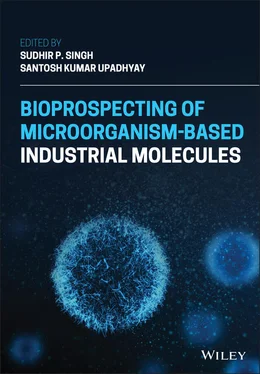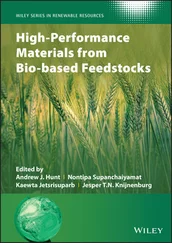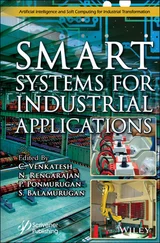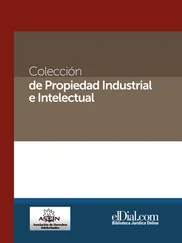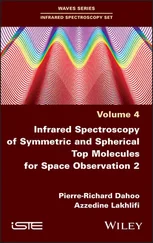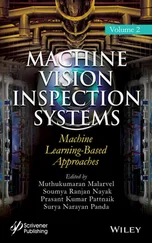1 Cover
2 Title Page
3 Copyright Page
4 About the Editors
5 List of Contributors
6 Preface
7 Acknowledgments
8 1 An Introduction to Microbial Biodiversity and Bioprospection 1.1 Introduction 1.2 Conclusions and Perspectives Acknowledgment References
9 2 Application of Microorganisms in Biosurfactant Production 2.1 Biosurfactants Nature and Classification 2.2 Biosynthesis of BS by Archaea and Bacteria 2.3 Biosynthesis of BS by Yeasts and Molds 2.4 Screening for BS Producers 2.5 A Case Study: SL by Solid‐State Fermentation (SSF), Kinetics, and Reactor Size Estimation 2.6 Conclusions and Perspectives References
10 3 Microbial Gums 3.1 Introduction 3.2 Biosynthesis of Microbial Gums 3.3 Production of Microbial Gums 3.4 Structure and Properties of Microbial Gums 3.5 Types of Microbial Gums 3.6 Applications of Microbial Gums 3.7 Conclusions and Perspectives Acknowledgments References
11 4 Antiaging and Skin Lightening Microbial Products 4.1 Introduction 4.2 Aging 4.3 Extrinsic Skin Aging Factors 4.4 Why Microbes 4.5 Conclusions and Perspectives References
12 5 Application of Microorganisms in Bioremediation 5.1 Introduction 5.2 Microbial Bioremediation 5.3 Microbial Bioremediation of Organic Pollutants 5.4 Microbial Degradation of Heavy Metals 5.5 Factors Affecting Bioremediation 5.6 Advances in Bioremediation 5.7 Conclusions and Perspectives References
13 6 Microbial Applications in Organic Acid Production 6.1 Introduction 6.2 Glycolic acid (2C) 6.3 Acetic Acid (2C) 6.4 Pyruvic Acid (3C) 6.5 Lactic Acid (3C) 6.6 Succinic Acid (4C) 6.7 Fumaric Acid (4C) 6.8 Malic Acid (4C) 6.9 Itaconic Acid (5C) 6.10 Gluconic Acid (6C) 6.11 Citric Acid (6C) 6.12 Kojic Acid (6C) 6.13 Muconic and Adipic Acid (C6) 6.14 Conclusions and Perspectives Acknowledgments References
14 7 Production of Bioactive Compounds vs. Recombinant Proteins 7.1 Introduction 7.2 In vitro Cell‐Based Assays 7.3 Cell Viability Assays 7.4 Cell Metabolic Assays 7.5 Cell Survival Assays 7.6 Cell Transformation Assays 7.7 Cell Irritation Assays 7.8 Heterologous Expression of Recombinant Proteins of Biomedical Relevance 7.9 Lactic Acid Bacteria and the Production of Metabolites with Therapeutic Roles 7.10 Preclinical Studies 7.11 Computer‐aided Drug Design References
15 8 Microbial Production of Antimicrobial and Anticancerous Biomolecules 8.1 Introduction 8.2 Microbial Sources 8.3 Microbial Bioprospecting Methods 8.4 Bioactive Compounds 8.5 Future Prospects 8.6 Conclusions and Perspectives Acknowledgments References
16 9 Microbial Fuel Cells and Plant Microbial Fuel Cells to Degradation of Polluted Contaminants in Soil and Water 9.1 Introduction 9.2 History 9.3 Electricigens 9.4 Electron Generation and Transfer Mechanisms of Electricigens 9.5 Materials 9.6 Design and Operation of Bioelectrochemical Systems 9.7 Performances of the MFCs in Actual Wastewater Treatment 9.8 Soil MFCs for Soil Remediation 9.9 PMFCs for Environmental Remediation 9.10 Prospectives 9.11 Conclusions References
17 10 Microalgae‐Based UV Protection Compounds 10.1 Introduction 10.2 UV Radiation 10.3 Protection Compounds Induced by UV Radiation 10.4 Microalgal Biotechnology for the Production of Photoprotective Compounds 10.5 Effects of UV Radiation on the Growth, Morphology, and Production of Lipids, Proteins, and Carbohydrates 10.6 Extraction Methods of Photoprotective Compounds 10.7 Prospects for Commercial Applications 10.8 Conclusion and Perspectives References
18 11 Microorganisms as a Potential Source of Antioxidants 11.1 Introduction 11.2 Antioxidant‐Producing Microorganisms 11.3 Production of Some Microbial Antioxidants and Their Action Mechanisms 11.4 Extraction and Purification of Microbial Antioxidants 11.5 Evaluation of Antioxidant Activity 11.6 Conclusions and Perspectives References
19 12 Microbial Production of Biomethane from Digested Waste and Its Significance 12.1 Introduction 12.2 Methane 12.3 Types of Waste 12.4 Digestion Processes of Organic Wastes 12.5 Conclusions and Perspectives Acknowledgments Conflicts of Interest References
20 13 Enzymatic Biosynthesis of Carbohydrate Biopolymers and Uses Thereof 13.1 Introduction 13.2 Dextran 13.3 Chitin and Chitosan 13.4 Xanthan Gum 13.5 Bacterial Cellulose 13.6 Levan 13.7 Conclusions and Perspectives Acknowledgments References
21 14 Polysaccharides from Marine Microalgal Sources 14.1 Introduction 14.2 Polysaccharides from Marine Microalgae 14.3 Optimization of Microalgae Culture Conditions 14.4 Bioactivities and Potential Health Benefits 14.5 Conclusions and Perspectives Acknowledgment References
22 15 Microbial Production of Bioplastic 15.1 Introduction 15.2 General Structure of PHA 15.3 Physical Properties 15.4 Biodegradability of PHA 15.5 Biosynthesis of PHA 15.6 Challenges of Scaling Up of PHA Production on an Industrial Scale 15.7 Co‐synthesis of PHA with Value‐Added Products 15.8 Blends of PHA 15.9 Applications of PHA 15.10 Conclusions and Perspectives References
23 16 Microbial Enzymes for the Mineralization of Xenobiotic Compounds 16.1 Introduction 16.2 Major Pollutants and Their Removal with White‐Rot Fungi 16.3 Enzyme System of White‐Rot Fungi 16.4 Molecular Aspect 16.5 Conclusions and Perspectives Acknowledgement Compliance with Ethical Guidelines References
24 17 Functional Oligosaccharides and Microbial Sources 17.1 Introduction 17.2 Inulin and Oligofructose: The Preliminary Functional Oligosaccharides 17.3 GRAS and FOSHU Status 17.4 Conventional and Upcoming Oligosaccharides 17.5 Microbes and Functional Oligosaccharides 17.6 Arabinoxylo‐Oligosaccharides 17.7 Sources and Properties 17.8 Approaches for AXOS Production 17.9 Isomaltooligosaccharides 17.10 Sources and Properties 17.11 Production of IMO 17.12 Approaches to Improve IMO Production 17.13 Lactosucrose 17.14 Novel Approaches in Lactosucrose Preparation 17.15 Xylooligosaccharides 17.16 Occurrence and Properties 17.17 Approaches to Improve the Efficiency of XOS 17.18 Conclusions and Perspectives References
25 18 Algal Biomass and Biofuel Production 18.1 Introduction 18.2 Biofuels 18.3 Algae: The Biomass 18.4 Microalgae as Biofuel Biomass 18.5 Microalgae Culture Systems 18.6 Microalgae Harvesting 18.7 Processing and Extraction of Components 18.8 Biofuel Conversion Processes 18.9 Microalgal Biofuels 18.10 Conclusions and Perspectives References
26 19 Microbial Source of Insect‐Toxic Proteins 19.1 Introduction 19.2 Fungi 19.3 Bacteria 19.4 Virus 19.5 Conclusions and Perspectives References
27 20 Recent Trends in Conventional and Nonconventional Bioprocessing 20.1 Advances in Conventional Bioprocessing 20.2 Nonconventional Bioprocessing 20.3 Brief Note on the Recent Trends in Downstream Bioprocessing 20.4 Perfusion Culture for Bioprocess Intensification 20.5 Conclusions and Perspectives References
28 Index
29 End User License Agreement
1 Chapter 2 Table 2.1 Classification of surfactants by origin, ionic status, and hydrop... Table 2.2 Archaea and bacteria as biosurfactant producers. Table 2.3 Yeasts and molds as biosurfactants producers. Table 2.4 Estimated parameters to characterize the kinetics of the producti...
2 Chapter 3 Table 3.1 Microbial gums and their producer organisms. Table 3.2 Applications of microbial gums.
3 Chapter 4 Table 4.1 Classification of aging theories. Table 4.2 Algal biomolecules, sources, origins, and applications in cosmeti...
4 Chapter 8Table 8.1 The databases and software tools used for in silico approaches for...Table 8.2 Bioactive compounds from the microbial origin and their applicatio...
5 Chapter 9Table 9.1 Electrocigens and functions.
6 Chapter 10Table 10.1 Production of UV protector compounds by microalgae.
7 Chapter 11Table 11.1 Summary of some critical studies on isolation, purification, and...Table 11.2 Different methods of antioxidant activity.
Читать дальше
